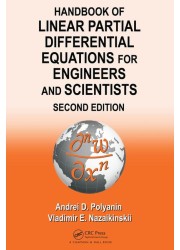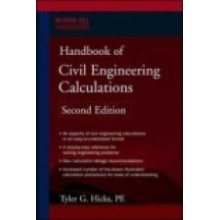Your shopping cart is empty!
Welcome visitor you can login or create an account
Handbook of Linear Partial Differential Equations for Engineers and Scientists, Second Edition
Publisher: CRC Press
ISBN: 9781466581456
Author: Andrei D. Polyanin, Vladimir E. Nazaikinskii
Dispatch Time: Pre-Order
ISBN: 9781466581456
Author: Andrei D. Polyanin, Vladimir E. Nazaikinskii
Dispatch Time: Pre-Order
List Price: £127.00
Our Price: £114.30
Discount : 10%
Our Price: £114.30
Discount : 10%
Quantity:
-
Add to Compare
Features
- Provides a comprehensive database of solutions to linear partial differential equations (PDEs) and equations of mathematical physics
- Considers equations of parabolic, hyperbolic, elliptic, mixed, and other types
- Offers a broad choice of reliable solution methods and shows by specific examples how to use these methods
- Addresses equations arising in various applications, including heat and mass transfer, elasticity, acoustics, electrodynamics, electrical engineering, and more
- Discusses symbolic and numerical methods for solving PDEs with Maple, Mathematica, and MATLAB®
- Describes a number of new linear equations, exact solutions, transformations, and methods on par with the progress of science
Summary
- Includes nearly 4,000 linear partial differential equations (PDEs) with solutions
- Presents solutions of numerous problems relevant to heat and mass transfer, wave theory, hydrodynamics, aerodynamics, elasticity, acoustics, electrodynamics, diffraction theory, quantum mechanics, chemical engineering sciences, electrical engineering, and other fields
- Outlines basic methods for solving various problems in science and engineering
- Contains much more linear equations, problems, and solutions than any other book currently available
- Provides a database of test problems for numerical and approximate analytical methods for solving linear PDEs and systems of coupled PDEs
New to the Second Edition
- More than 700 pages with 1,500+ new first-, second-, third-, fourth-, and higher-order linear equations with solutions
- Systems of coupled PDEs with solutions
- Some analytical methods, including decomposition methods and their applications
- Symbolic and numerical methods for solving linear PDEs with Maple, Mathematica, and MATLAB®
- Many new problems, illustrative examples, tables, and figures
To accommodate different mathematical backgrounds, the authors avoid wherever possible the use of special terminology, outline some of the methods in a schematic, simplified manner, and arrange the material in increasing order of complexity.
Write a review
Your Name:Your Review: Note: HTML is not translated!
Rating: Bad Good
Enter the code in the box below:
Price subject to change without notice
Copyright © 2014 Engineering Standards Bureau. All Rights Reserved.
Developed By Zoom Into Web
Copyright © 2014 Engineering Standards Bureau. All Rights Reserved.
Developed By Zoom Into Web







